 |
 |
 |
| |
HIV Incidence in Users of HIV Preexposure
Prophylaxis in Australia: A Whole-of-Population Analysis
|
| |
| |
CROI 2024 March 3-6 Denver
Dr Nick Medland
Kirby Institute, UNSW, Sydney, Australia
Co-authors: Hamish McManus, Doug Fraser, Ben
Bavinton, Michael Traeger, Andrew Grulich, Mark
Stoove, Jonathan King, Dash Heath-Paynter,
Rebecca Guy
Program Abstract, numbers are a little different but outcomes are the same.
Background: Use of HIV pre-exposure prophylaxis (PrEP) at scale has been associated with reduced community HIV transmission: diagnoses of recently acquired HIV (under one year) among gay and bisexual men in Australia fell from 223 in 2018 to 107 in 2022. We examined HIV incidence and risk factors in all people receiving PrEP in Australia's national health system.
Methods: Linked de-identified records for all government subsidised PrEP and antiretroviral therapy (ART) from April 2018 to June 2023 allowed us to identify HIV acquisition in PrEP users who initiated ART. ART initiation was used as a proxy for HIV acquisition given high rates of HIV testing among PrEP users (at least 6- monthly) and high treatment uptake (over 95% after six weeks) in Australia. The date of HIV acquisition was the midpoint between 30 days before ART initiation and either six months prior or the most recent PrEP prescription. We calculated days covered by PrEP and HIV incidence in people using PrEP and its predictors using Poisson regression over the study period of April 2018 to December 2022.
Results: Of 62,563 people receiving PrEP (97.8% men, median age 33), 190 acquired HIV during the study period with an overall incidence rate of 1.09/1000 person years (95%CI 0.94-1.25). HIV incidence was 2.65/1000PY among those dispensed PrEP once only (20.0% of PrEP users, 31.6% of HIV cases), compared with 1.02/1000PY among those with <60% of days covered (52.4% of PrEP users, 54.2% of HIV cases) and 0.53/1000PY among those with ≥60% of days covered (28% of PrEP users, 14% of HIV cases). Using the group dispensed PrEP only once as a comparator, those with ≥60% days covered had an 80.2% reduction in incidence (p<.001) and those with <60% days covered a 61.5% reduction (p=.009). Incidence was also higher in specific subgroups: those with a record of hepatitis C treatment (10.05/1000PY, 0.6% of PrEP users, 6.3% of HIV cases) and 18-29 year-olds (1.32/1000PY, 35.1% of PrEP users, 40.0% of HIV cases). PrEP usage, younger age and hepatitis C treatment were independent predictors of HIV incidence.
Conclusion: HIV acquisition in people previously engaged in PrEP accounted for 57.9% of diagnosed newly acquired HIV among gay and bisexual men in Australia in 2022, highlighting the need for interventions focused on this population to achieve elimination. In particular, support is needed for those who don't return for repeat dispensing and less frequent PrEP users. Programs should also be tailored for specific socio-demographic characteristics.
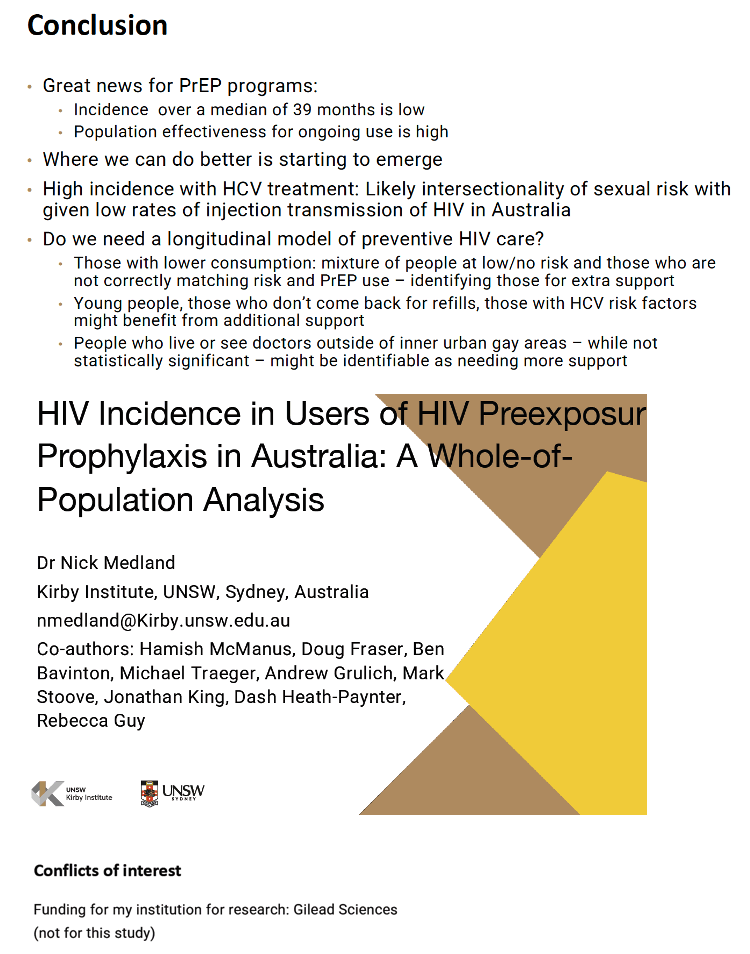
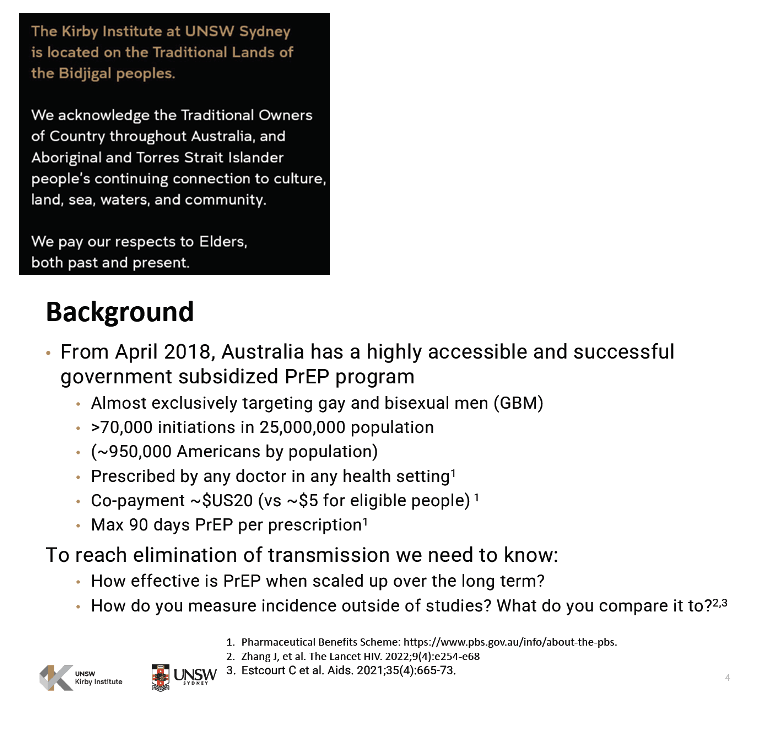
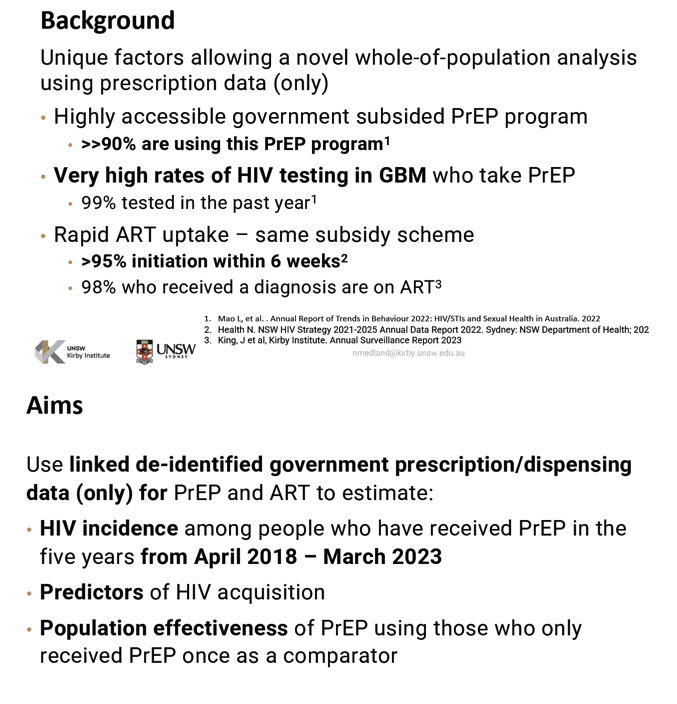
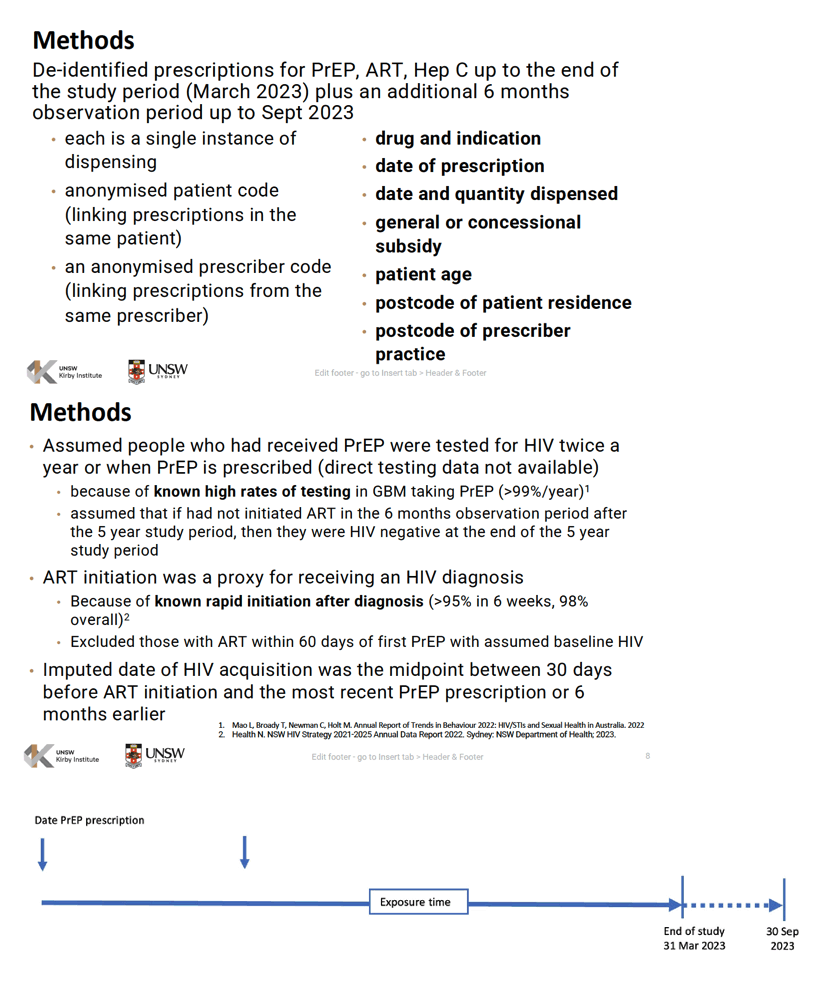
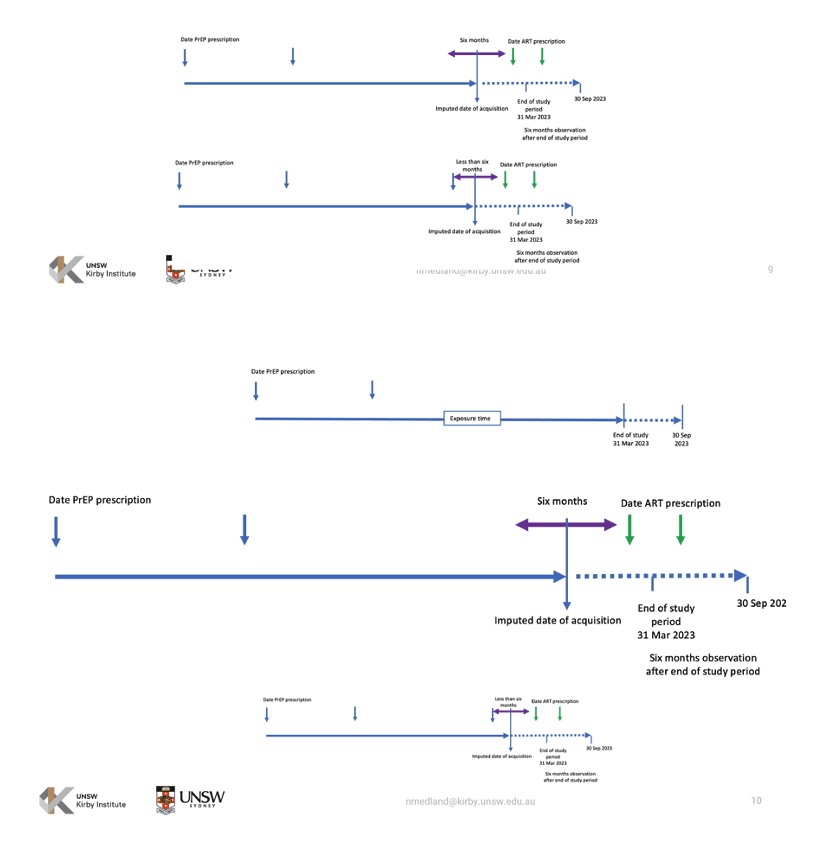
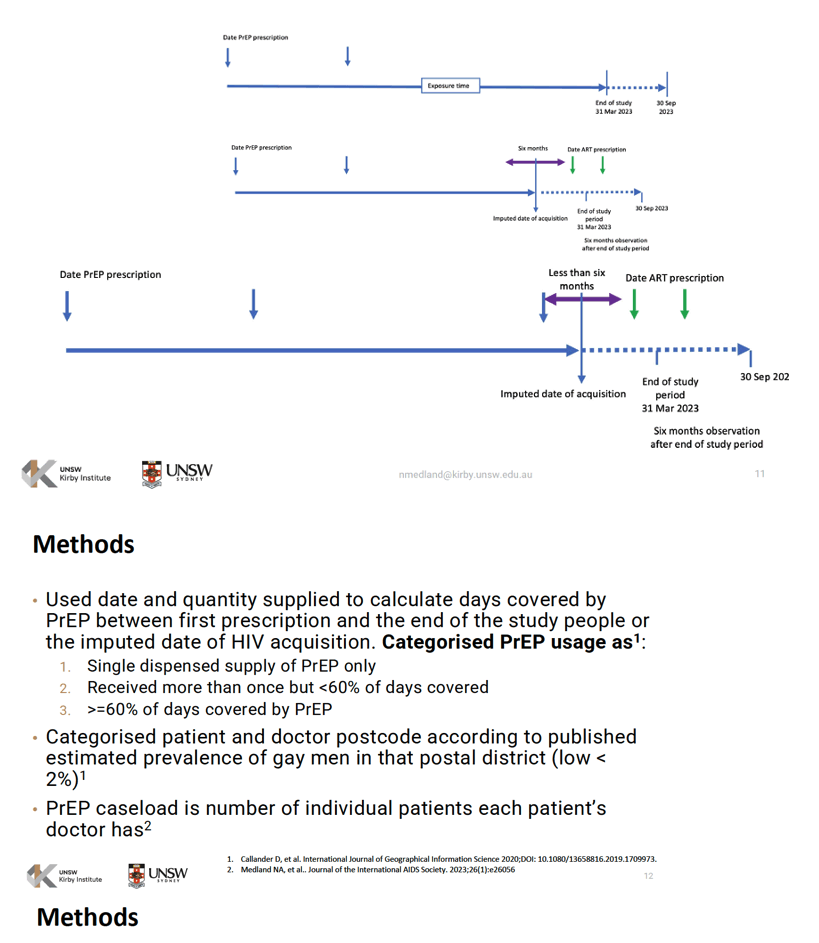

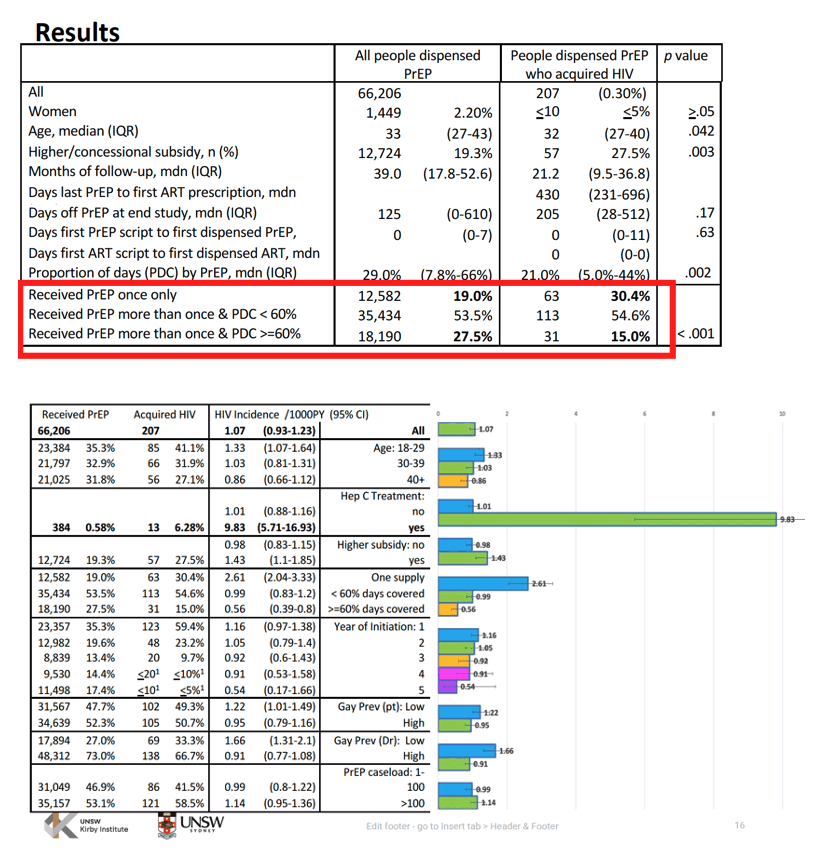
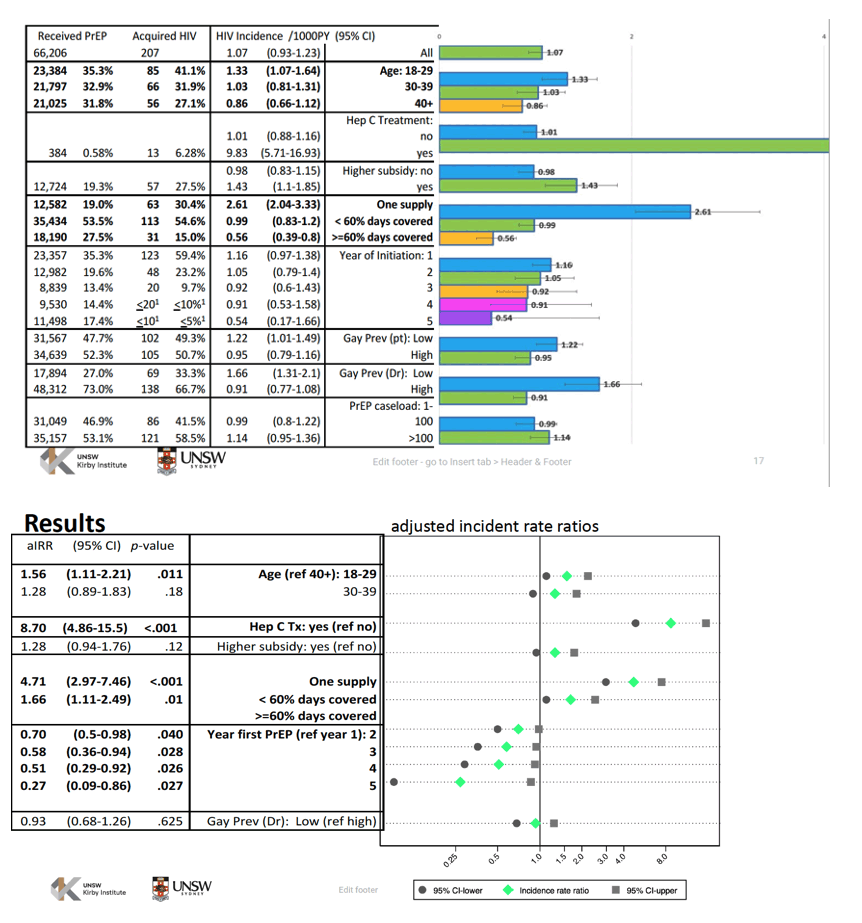
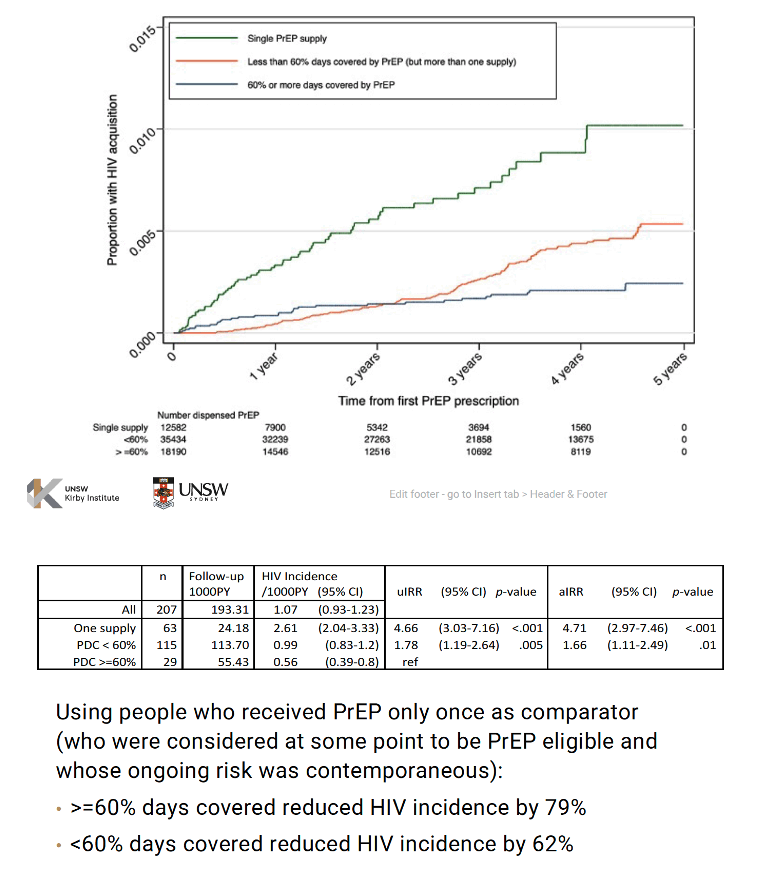
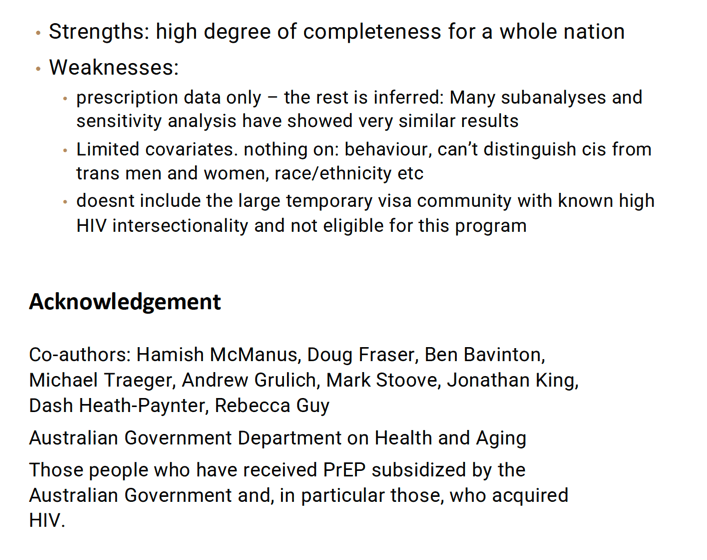
|
| |
|
 |
 |
|
|